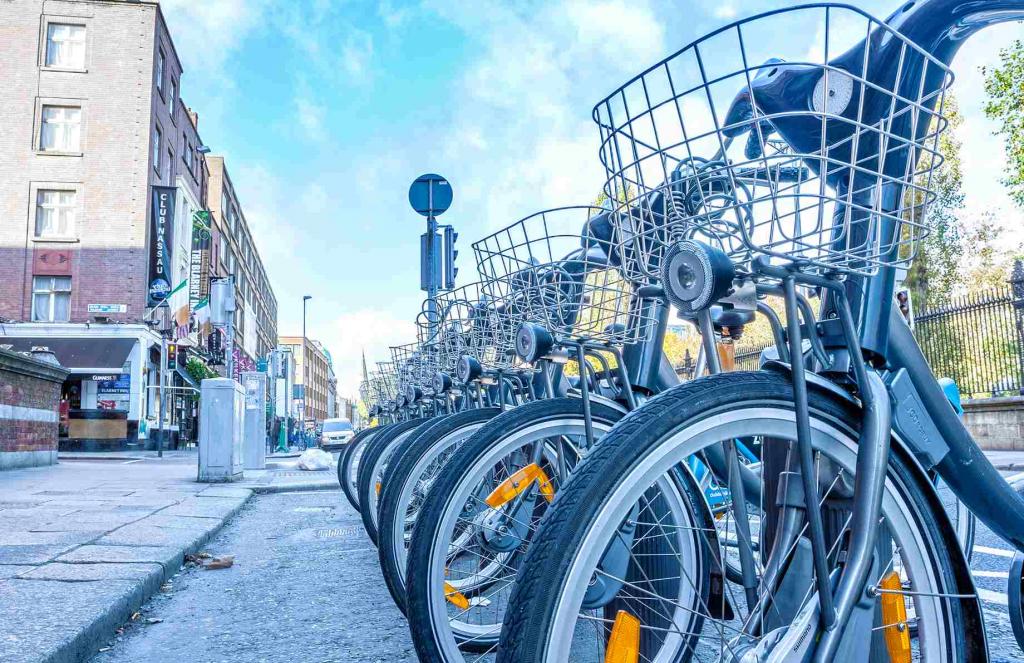Thessaloniki gets ready for its metro launch in November
The underground rapid transit lines have been under construction for almost two decades due to various project delays
 TheMayor.EU logo
TheMayor.EU logo 
The share of active journeys in Dublin currently sits at 12% adn the plan wants to raise it to 28% by 2028, Source: Depositphotos
The Active Travel plan will see 95% of residents live no further than 400 metres away from bike route access or public transport
Last week, Dublin authorities unveiled their Active Travel plan, committing city authorities to work to gradually push people away from cars and towards active modes of transport meaning cycling and walking. The plan calls for expanding Dublin’s current 10-kilometre-long cycling routes into a city-spanning network of over 310 kilometres in the next nine years.
As RTÉ, Ireland’s national broadcaster, reports, Minister for Transport and Climate, Eamon Ryan explained that the Active Plan is backed by two very important components – funding and political will. Minister Ryan stressed the need to decarbonise the mobility sector in Dublin, as the city has committed to becoming a zero-carbon city by 2050.
However, authorities will have a steep road ahead, as residents have previously blocked cycling lane schemes in specific regions. Also, the city will need to increase the share of active journeys (i.e. made with bikes or on foot) from a relatively low current 12% to 28%, by 2028.
Nevertheless, Minister Ryan claimed that the Covid-pandemic changed a lot of attitudes about opening streets up to more pedestrian and cycling traffic as people tried to find open-air public spaces to meet.
Dublin City Council Chief Executive Owen Keegan explained that some people will lose out, as he pointed to parking around shops in particular. He also stressed that the city will need to proceed carefully to mitigate that impact, as adding a comprehensive cycling network to the city would definitely work towards the public good.
These include reducing CO2 pollution and saving money on commutes for citizens. Moreover, according to an official statement by the city, it could help people be more fit, have more reliable journey times and actually travel quicker than with a car.
Minister Ryan doubled down, by saying that when the Active Travel plan is complete, around 95% of residents in Dublin would have access to the bus or cycling networks, located within 400 metres of their place of residence.

The underground rapid transit lines have been under construction for almost two decades due to various project delays

Now you can get your wine in Talence by paying directly in Bitcoin

That’s because the state has to spend money on updating the railway infrastructure rather than subsidizing the cost of the popular pass

Rethinking renewable energy sources for the urban landscape

The examples, compiled by Beyond Fossil Fuels, can inform and inspire communities and entrepreneurs that still feel trepidation at the prospect of energy transition

Now you can get your wine in Talence by paying directly in Bitcoin

The 10th European Conference on Sustainable Cities and Towns (ESCT) sets the stage for stronger cooperation between the EU, national and local level to fast track Europe's transition to climate neutrality.

At least, that’s the promise made by the mayor of Paris, Anne Hidalgo

The underground rapid transit lines have been under construction for almost two decades due to various project delays

At least, that’s the promise made by the mayor of Paris, Anne Hidalgo

Hostal de Pinós is located in the geographical centre of the autonomous region

Despite its church-y name, the district has long been known as the hangout spot for the artsy crowds

Urban dwellers across the EU are having a say in making their surroundings friendlier to people and the environment.

Forests in the EU can help green the European construction industry and bolster a continent-wide push for architectural improvements.

Apply by 10 November and do your part for the transformation of European public spaces

An interview with the Mayor of a Polish city that seeks to reinvent itself

An interview with the newly elected ICLEI President and Mayor of Malmö

A conversation with the Mayor of Lisbon about the spirit and dimensions of innovation present in the Portuguese capital














